Visual Romanticism as a Subversive Affect
The Polaroids of Andrei Tarkovsky, 1979-1983
Vol. 17 (May 2012) by Gawan Fagard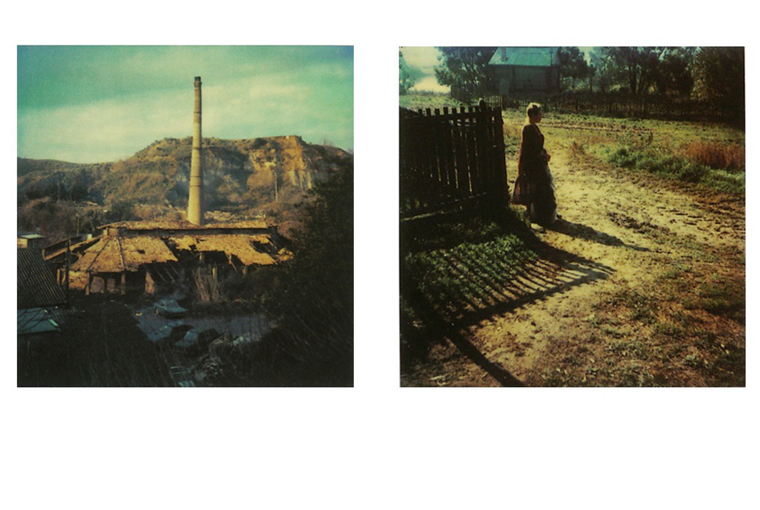
The Italian director Michelangelo Antonioni reportedly gave his friend and colleague Andrei Tarkovsky a Polaroid camera in 1977. According to Tonino Guerra, who worked as a screenwriter for both directors, Antonioni often used a Polaroid camera himself while location scouting in Uzbekistan.1 Polaroid – being one of the flagship products of American consumer culture-, struggled with its image as a medium for amateur photography, and it might appear remarkable that both Antonioni and Tarkovsky – filmmakers with an extreme attention to cinematographic purity – were drawn to this popular and relatively cheap medium. Obviously, professional photographers in the United States such as Robert Mapplethorpe, Ansel Adams and Andy Warhol had already been conceiving Polaroid pictures as an integral part of their work, using its specific image quality to their advantage, and propagating it as a medium for fine art photography.2
However, it should be noted that Tarkovsky never seemed to have had the intention to include his Polaroid snapshots in his work as an artist and filmmaker – even though the repeated artbook publications and exhibitions (which all happened posthumously) might suggest otherwise. Nevertheless, regardless of their purpose, they were crafted cautiously by their author. As the the framing and lighting reflect the eye of an experienced cinematographer, so the composition was staged with an obvious painterly flamboyance. Thus they reveal a lot about Tarkovsky’s aesthetic sensibility beyond documentary meaning. They raise the following key questions I intend to address here: why is it that Andrei Tarkovsky grabbed his instant camera to shoot pieces of daily life between roughly 1979 and 1983 – the period surrounding his exile in Italy? What affective state underlies Tarkovsky’s desire to “stop time” by means of snapshots, as Tonino Guerra put it?3 And what role does the specific image quality of Polaroid play in its affective mediation of reality? Using the example of Andrei Tarkovsky, I wish to address questions of the ontology of the Polaroid picture as an immediate imprint of reality and its power as a medium for nostalgia, and, with regard to Tarkovsky’s work, also as a medium with subversive affect through the aesthetics of visual romanticism. To conclude, I wish to formulate some essayistic reflections about the current status of instant photography, and its function in contemporary visual culture.
Russia
From the nearly 200 Polaroid pictures Andrei Tarkovsky took between 1979 and 1983, only 60 have been selected from the archive at the the Instituto Internazionale Andrei Tarkovski in Florence and published by the Milan-based publishing house Ultrea.4 The first 27 were taken in Russia, chiefly in and around his country house in Myasnoe right outside of Moscow, whereas the remaining 33 had been shot in Italy during the preparations for Nostalghia.
The Russian pictures breathe the fresh air of pastoral harmony. His wife Larisa, his son Andrei, and their dog Dakus play a central role here. As much as the Polaroids convey domestic harmony, they also express the melancholy of seeing something for the last time. Indeed, Tarkovsky took these pictures shortly before he left for Italy, never to return. He would see his son only four years later on his deathbed in Paris. As such, the pictures are seemingly picturesque documents of what turned out to be Tarkovsky’s most intimate and dramatic trauma: the impossibility of domestic happiness in his life, and by extension, the forlornness of his whole generation that grew up in the absence of their fathers during and after the Second World War.5 But crucially, the very technology of Polaroid pictures plays a disruptive role in these seemingly harmonious scenes. On the one hand, Tarkovsky distances himself from the ‘here and now’ while framing the picture. On the other hand, the Polaroid also renders the picture immediately available. The instantaneous process of the Polaroid picture literally turns the flow of the moment into a condensed double of reality. While using his Polaroid camera, the photographer’s vision is divided between the moving bodies of reality and the fixed still image.

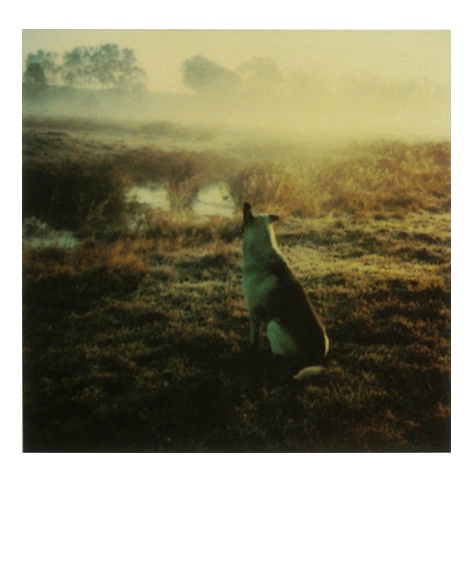
From this point of view, the instant photograph intensifies the process of regular photographic representation by rendering both scene and image simultaneous. The experience of the moment and its representational result are immediately comparable to each other. One could say that the picture performs its punctum in a dramatic suspension of the timeframe of immediate experience of reality.6 The presence of say Tarkovsky’s son Andriousha both in the world and in the image simultaneously performs in its purest sense the underlying ontological basis of the photographic image as a confirmation of conditional temporality and death.7 Investigating Tarkovsky’s own reflection about the relationship of images with death appears all the more surprising in this Bazinian framework. In the following quote taken from his diaries, Tarkovsky seems to turn Bazin’s relationship of the image to death radically upside down:
Life contains death. An image of life, by contrast, excludes it, or else sees it in a unique potential for the affirmation of life. Whatever it expresses – even destruction and ruin – the artistic image is by definition an embodiment of hope, it is inspired by faith. Artistic creation is by definition a denial of death. Therefore it is optimistic, even if in an intimate sense the artist is tragic.8
Here Tarkovsky clearly states his deepest connection to death, and the restorative role he attributes to the creation of images. He ends his argument with a compelling and mysterious contradiction: the nature of artistic creation is seen as restorative and spiritually harmonizing, all the while being intimately tragic and thus evoking death. I would argue that this contradiction is the very playground in which Tarkovsky’s art takes place, not only his films, but also – perhaps even more intensely – in his Polaroid pictures. Whereas Bazinian photograpy theory has always assumed that the photographic experience functions as a dramatic reminder of temporality and death, Tarkovsky seeks to re-invigorate photography with the flavor of eternal life. In that sense, he is a thoroughly romantic artist.
Aesthetically, Tarkovsky’s Polaroids reveal a lot about the way he composed his images in his films. However, it seems that in still photography, he allows himself more space for idealizing. As Boris Groys noted, Tarkovsky’s series of Polaroids from Myasnoe do not so much express the desire to immortalize reality, as they try to recreate a whole new reality referring to the aesthetics of 19th century romanticism.9 According to Groys, Tarkovsky not only attempts to visually restore the rural Russia from before the revolution, but also projects this nostalgic past into an absolute, aesthetic realm that only exists inside of the Polaroid pictures themselves. Tarkovsky indeed seeks explicit connection with German romantic landscape painters such as Caspar David Friedrich: he captures the landscape very early in the morning, when the fog and the setting sun meet and create mystifying atmospheric effects. It seems that, while framing the scene, Tarkovsky is more concerned with recreating an ideal image of ‘nature’ pre-existing in his imagination than he is with documenting the events of the day. Although in the portraits of his son Andrei one senses a deep human love, aesthetically speaking Tarkovsky seems chiefly interested in enveloping this love with a sacred vision of the surrounding landscape. The human presence only exists to mediate between the mystical nature of the landscape and the beholder. As such, Tarkovsky creates a deeply affective geography of the Russian countryside, in which his inner ‘landscape’ communicates with the shape of the world.10 Tarkovsky’s affective and idealizing relationship with the geographic environment of the Russian countryside, also a primordial aspect in both Solaris and The Mirror, do not so much deliver a documentary image of his family life. Instead, they evoke a paradisical sense of harmony, seeking contact with various traditions of visual mysticism throughout the course of the history of art.

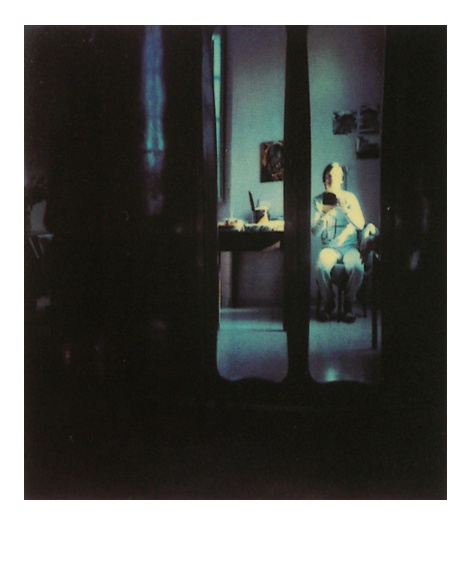
Tarkovsky’s Polaroids are small, portable edifices of memory that appear on the sensitive surface of the Polaroid emulsion, allowing the past to give life and depth to an unknown future. The ethereal, slightly overexposed quality of the light, typical of the Polaroid picture, gives the series its sublime character. Often shot against the sunlight, Tarkovsky’s Polaroids evoke a sense of the sacred in the way the Polaroid emulsion gets over-exposed, featuring milky yellow shades. In their ontological shape as an imprint of reality onto a sensitive plate, they rather pay credit to the onto-theological paradigms of the orthodox icon, than to those of the photograph. Hence, rather then restorative, Tarkovsky’s Polaroids are revelationist in nature: they reveal an imaginary, visionary geography, all the while idealizing the assets of the past.11
Italy
The early eighties are a period of dramatic change in the lives of many Russian artists and intellectuals. Perestroika created a hesitant opening towards the West, and a general fatigue with the bureaucratic Soviet regime initiated massive migration to the West. In that period, Tarkovsky was able to build an Italian-Soviet coproduction structure in order to make Nostalghia, his first film shot in Western Europe. To many writers and critics, this decision appeared at odds with Tarkovsky’s profound Russianness, and one indeed wonders how precisely Tarkovsky could have been able to find creative asylum outside of his beloved Russia. Besides the obvious political issues, Tarkovsky’s migration to Italy was also, and maybe most importantly, an emotional and aesthetic drama. As the series of Polaroids made in Russia show, there is an immediate relation between Tarkovsky’s emotional life and the aesthetic paradigms to which he commits himself. In the process of making Nostalghia, this relation is probably heightened to an absolute. In an interview with an Italian newspaper, he elaborates this point:
The film expresses a feeling which is deeply rooted in myself, and which I never felt so strongly before I left the Soviet Union. Nostalgia for us Russians is not a lighthearted, positive emotion as it is for you Italians, but a kind of mortal illness, a profound compassion which is not so much bound up with deprivation, loss, or separation as with the suffering of others, which draws you closer to them through an emotional link. It’s an illness which saps the strength of the soul, one’s capacity to work, and one’s pleasure in life.12
It is tempting here to plunge into the pitfall of biographical determinism, but the problem Andrei Tarkovsky addresses in large part surpasses its purely biographical scope. It is not his migration as a biographical event that has to be understood as a source for the nostalgic tone in his films. Already in Russia, Tarkovsky expresses a strong longing for a lost spiritual unity13 – placing himself in a longstanding tradition of modernist Russian authors such as Aleksei Khomiakov, Vladimir Solovev and Viacheslav Ivanov. In effect, Tarkovsky has been characterized as a modernist in search for spiritual unity – an endeavor that is strongly at odds with the stakes of the Cold War-struck Soviet Union of his days. Tarkovsky’s everlasting quest for spiritual unity finds its dramatic opponent in the paradigm of the 20th-century as a whole, that is in a materialist, industrial culture, regardless of whether it is of a communist or a capitalist nature. Tarkovsky’s visual language of nostalgia thus functions as a subversive affect desiring to undo the spiritual disaster modern industrialization has caused.14
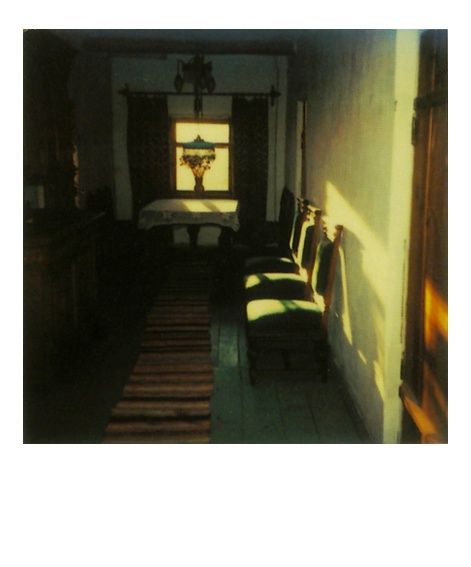
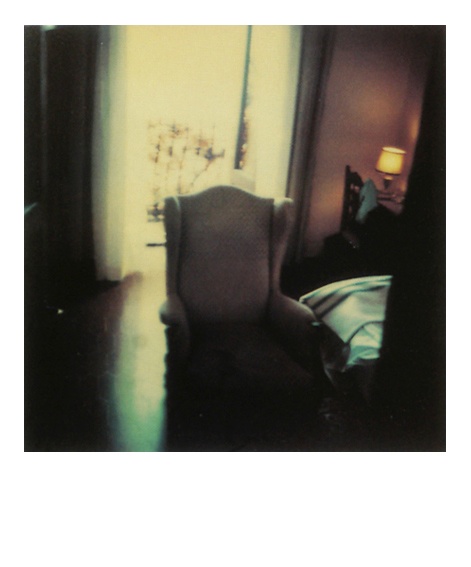
But how does the Polaroid picture relate to Tarkovsky’s over-arching project to address questions of reunification and harmonization? As argued above, in its very ontology as an instantaneous, industrially induced image, the Polaroid plays a disruptive role in the experience of time itself, the Polaroid picture confirms a distanced relationship to reality, and thus reaffirms the impossibility of inhabiting the world immediatedly. The Polaroids Tarkovsky shot in Italy between 1980 and 1983 – the period of preparation for Nostalghia-, are no exception to this notion. Yet, their effect is further intensified. Unlike the Russian series, these Polaroids feature an absolute absence of domestic harmony, and instead show rather edgy and sometimes even formalist views of hotel rooms, overexposed window frames, and small still lives with personal relics. The impossibility of inhabiting the world has moved from an ontological to a representational level in the subjects Tarkovsky chooses to portray. As the scholar Tony Mitchell comments, this atmosphere of homelessness, which has inspired the whole script of Nostalghia, not only confirms the impossibility of importing and exporting culture in the process of exile, but also states the very impossibility of a home tout court.15 As the Russian series evokes a transcendental concept of home, the Italian series presents a dramatic inaccessibility of it, confirming a fundamental state of forlornness.
In his Italian endeavors, Tarkovsky used the Polaroids for a rather professional goal, namely as a medium for location scouting. Its personal, yet cinematic quality is well suited to map Tarkovsky’s imagination on the new geographic givens of the Italian countryside. The often-stated argument that Tarkovsky desires to recreate Russia inside of the Italian context is contradicted by the fact that Tarkovsky’s Polaroid pictures have in large part lost its sense for harmonious romanticism. Rather then experiencing the slow appearance of the Polaroid image in the emulsion as the revelation of a new, potential world of harmony, these Polaroids become hard evidence of the ruined state of the nostalgic mind itself.
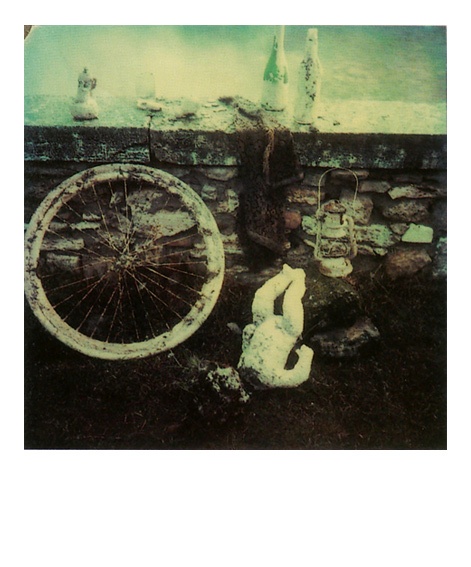
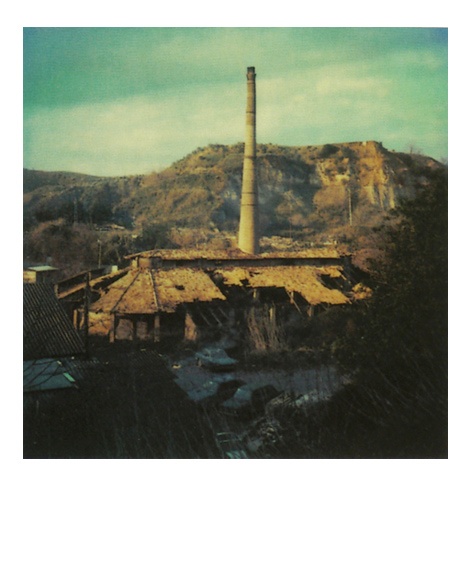
As opposed to the immaculate countryside of Myasnoe, Tarkovsky is instead attracted to dilapidated architecture, ruins, and historic graveyards. According to Svetlana Boym’s recent book The Future of Nostalgia, the preservation of ruins in their state of decay corresponds to the aesthetics of what she calls reflective nostalgia, that is: nostalgia of an allegorical nature, in which the translation of identity and the displacement of culture is impossible.16 As Georg Simmel has pointed out in his essay on the allegorical trope of the ruin, the ruin brings to life the intimate struggle of the ‘Willen des Geistes’ (will of the spirit) with the ‘Notwendigkeit der Natur’ (necessity of nature), thereby stressing the tragic dominance of nature over architecture.17 Ruins indeed already featured abundantly in Tarkovsky’s earlier films, most prominently in Stalker. As argued in Boym’s account, Tarkovsky’s use of ruins creates an affective experience of historicity – a human, emotional link between history and geography.18 Tarkovsky’s series of Polaroids shot in Italy thus function as an immediate imprint of a state of lost unity, as allegorized in the ruin. They incorporate the attempt to aesthetically and affectively reconnect the material world with its spiritual counterpart, allegorized in the immaterial aspects of the Polaroid surface, ergo the sensitive emulsion, which makes the image appear almost magically. As the Russian Polaroid series relate to the orthodox icon in being an imprint of a prototypical vision of divine harmony, the Italian series function as anti-icons, or Gegenbilder, circumscribing lost unity by its absolute absence in the image.
Conclusion, Provocation
Andrei Tarkovsky’s use of the Polaroid camera during the period of his exile is exemplary for an affective use of the medium. As I have argued, Tarkovsky uses the very characteristics of the medium to the advantage of what I would call a subversive affect by means of visual romanticism. The Polaroid’s immediateness, its physical uniqueness, and its ethereal image quality are responsible altogether for creating emotional depth and even spiritual evocation. The concrete process of the chemical reaction to light is thereby essential to the revelationist potentials of the Polaroid picture. In those terms, the immensely popular digital Polaroid imitators such as Instagram and Polarize are unable to evoke the same affective response to images, both by their reproducibility, and their immaterial quality. Instead of depth and resistance, digital photography advocates a paradigm of wide availability and purely formal nostalgia, thus undoing the ontological power of the Polaroid picture by an unjust use of its aesthetic features. As Tarkovsky’s use of the medium shows, a picture is not only its content, or its aesthetic aspects, but also its material process of coming-into-existence. As much as Tarkovsky’s Polaroids evoke the tension between the desire for spiritual harmony and the very impossibility of that harmony, they also investigate the revelationist nature of the medium itself. Maybe, digital photography should introspect more on its own material premises to obtain affective depth beyond flat vintage-nostalgia…

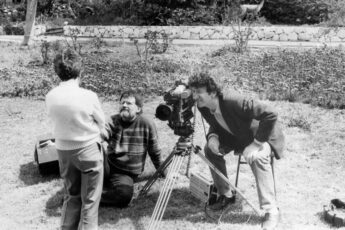

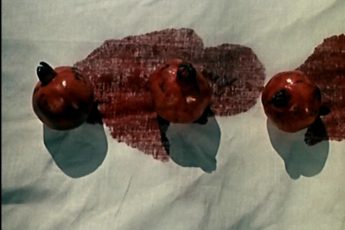
Leave a Comment